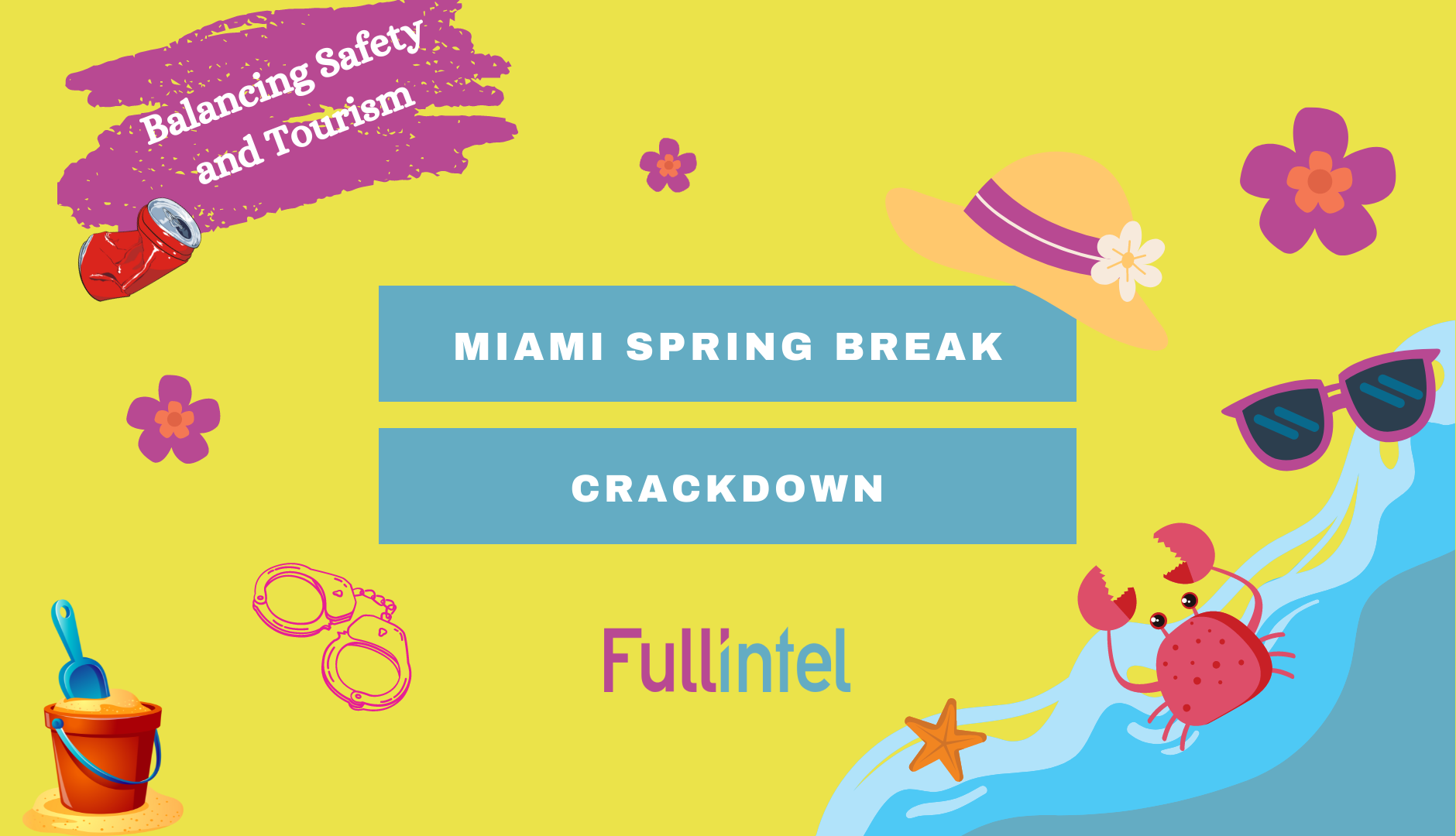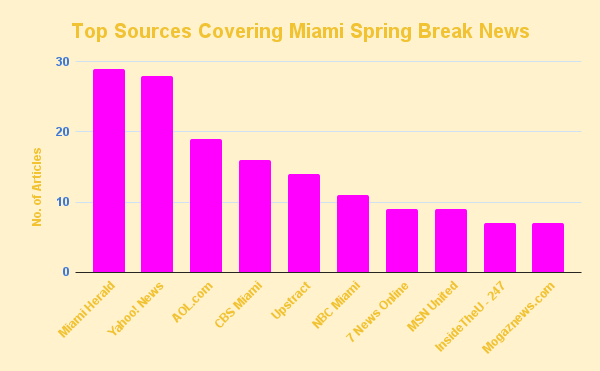
As the echoes of Miami’s Spring Break crackdown reverberate through the headlines, it’s clear that the city’s efforts to rein in the festivities have sparked a multifaceted discussion on the intersection of public safety and tourism.
Headlined by Yahoo News’ report on the dip in arrests and the absence of shootings during this year’s Spring Break, let’s delve into the key themes emerging from the aftermath of Miami’s decisive measures.
Crackdown on Spring Break Excess:
The resounding theme across headlines is the resolute crackdown on Spring Break revelry and excess in Miami Beach. Authorities implemented an array of measures, from curfews to heightened police presence and stricter regulations on short-term rentals, all aimed at preserving public order and safety amid the seasonal influx of visitors.
Mixed Reactions:
In the wake of the crackdown reactions have been polarized among residents, business owners, and visitors alike. While some have applauded the measures, citing concerns about public safety and the adverse impact of rowdy behavior on the community, others lamented the perceived blow to tourism and local businesses, fearing a decline in revenue during what has traditionally been a lucrative period.
Impact on Tourism and Businesses:
Indeed, the crackdown prompted apprehension among businesses reliant on tourism, particularly those in the hospitality and entertainment sectors. One nightclub reported a $1M loss due to the imposed midnight curfew. With fewer revelers roaming the streets, there’s a palpable fear of reduced foot traffic and diminished revenue streams during what should be a peak season.
Enforcement Challenges:
Yet, despite concerted efforts to enforce the regulations, reports also surfaced of resourceful Spring Breakers circumventing the measures or defiantly flocking to Miami Beach despite the crackdown. This posed significant challenges for law enforcement in managing crowds and ensuring compliance with the rules in the face of determined partygoers.
City’s Image and Reputation:
Moreover, the crackdown and its attendant media coverage cast a spotlight on Miami Beach’s overall image and reputation as a premier tourist destination. While some lauded the measures as essential for upholding public safety and order, others questioned the severity of the approach, fearing potential repercussions on the city’s allure for future visitors.

Some top sources covering the Miami spring break news.
Alternative Destinations:
The conversation has also turned to alternative destinations for Spring Breakers, with suggestions cropping up for places Texans can flock to instead of Miami. This underscores the shifting landscape of travel preferences and the imperative for destinations to adapt to evolving regulations and consumer behavior. Fort Lauderdale also reported a surge in spring breakers – and arrests – due to the Miami crackdown.
Public Relations Efforts:
In response to the scrutiny and debate surrounding the crackdown, Miami Beach officials embarked on public relations campaigns aimed at shaping the narrative. These efforts sought to dissuade potential Spring Breakers from descending on the city while emphasizing its unwavering commitment to public safety.
In sum, the coverage reflects the intricate dance between promoting tourism and safeguarding public order that characterizes the Spring Break season in Miami Beach. As the city navigates these turbulent waters, its challenge lies in striking the delicate balance between fostering a vibrant tourist economy and preserving the tranquility of its neighborhoods.
Only time will tell how Miami’s Spring Break saga will unfold in the seasons to come, but one thing remains certain: the conversation is far from over. Stay tuned for more insights as we continue to monitor the evolving dynamics of this perennial debate.
About Fullintel:
Ready to explore the intricate relationship between media narratives and real-world events? Discover the depth of insights available at Fullintel. Whether you’re a seasoned industry expert or simply intrigued by media intelligence, our comprehensive monitoring solutions provide a nuanced understanding of today’s stories.


